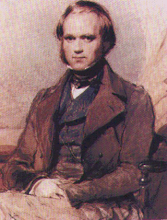
How could an obvious fraud like Piltdown Man be accepted as legitimate for over a half-century? Harvard paleontologist Stephen Jay Gould defined four factors that shaped public perception (and thus acceptance) of Piltdown:
I. The imposition of strong hope upon dubious evidence. In the case of Piltdown Man, national pride was at stake. France had cornered the market on paleoanthropological findings--Neandertals, CroMagnon, cave paintings. Piltdown, if real, would have pre-dated the hominid material from France, and England would reign supreme in this area. There was no love lost between French and English scientists.
II. Reduction of anomaly by fit with cultural biases. One of the reigning cultural biases of this time was the idea that in human evolution the brain got larger (which was seen as indicating more intelligence) and other morphological change followed. This model predicted the existence of hominid fossils with relatively large skulls and simian bodies. Voila! Piltdown was exactly what paleo-anthropologists of the time would have expected to find.
III. Reduction of anomaly by matching fact to expectation. After the fraud was discovered, it was obvious to anthropologists that the skull was human, the jaw belonged to an orang-utan, and that the pieces did not belong together. Before the revelation of fraud, however, scientists favorably disposed to the idea of Piltdown saw what they wanted to see and shaped the facts to fit their model of Piltdown as the oldest human relative.
IV. Prevention of discovery by practice. During the time of Piltdown's discovery and description, many museums, including the British Museum of Natural History, were not inclined to grant access to their material. Instead, it was treated proprietarily. In the case of Piltdown, researchers could look but not touch. Only a set of plast models of the bones could be handled. but only in the original bones could the fraud be detected--the artificial staining and filing down of the teeth did not show up in the plaster casts. Even famed paleoanthropologist Louis Leaky was not allowed to closely examine the original bones.
Could a hoax like Piltdown be perpetrated today? Human nature hasn't changed, so we are still susceptible to the first three factors Gould described. Fortunately, professional standards have evolved, and reproducibility, transparency and accessibility to specimens are required before extradordinary claims are widely accepted.
Reference: Gould, S.J., 1980, The Panda's Thumb, Chapter 10, Piltdown Revisited (p. 108-124).


One thing that would make a 21st century hoax more difficult to pull off is the internet, and the ease at which information can be shared. If something like Piltdown Man was announced nowadays, a written description and digital video/images could be immediately scrutinized by scientists and laypeople worldwide, almost immediately. That coupled with the need for openness (Point 4 above) and need for replication required by the modern scientific community.
ReplyDeleteA "good thing" about paleontological hoaxes (and the fact that scientists fell for them initially) is that it shows the self-corrective nature of science. When an idea/discovery crumbles under scrutiny, science disgards it, instead of hopelessly clinging to it (like certain other groups are wont to do).